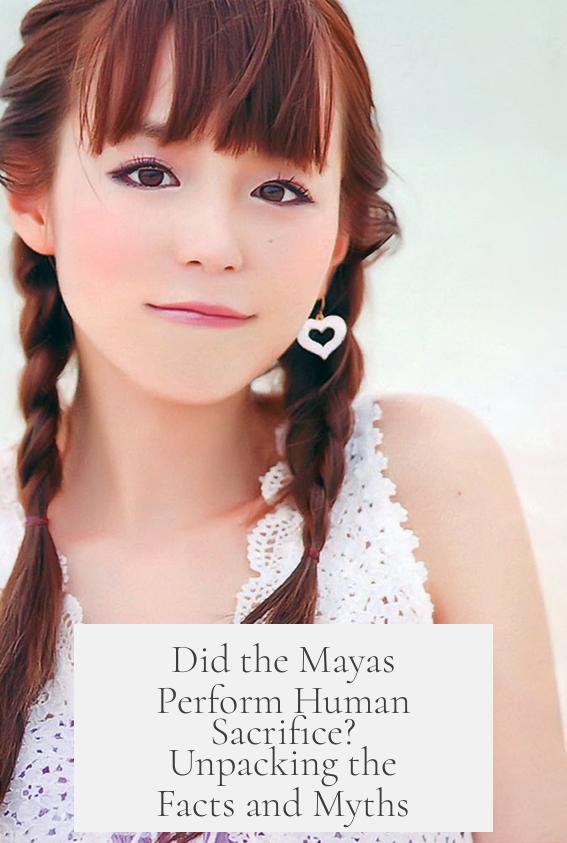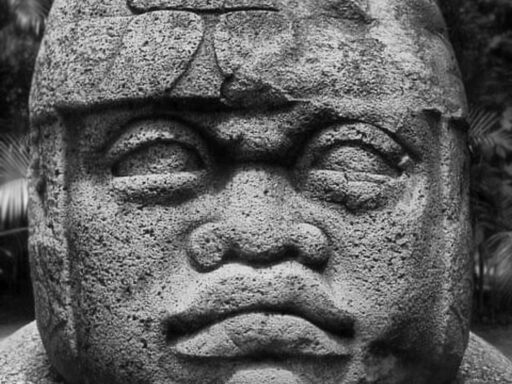The Mayas did perform human sacrifice, but understanding this requires careful consideration of cultural context and terminology. The evidence shows the practice existed, particularly during the Classical period across the Maya region and beyond. However, academic debates continue about the nature, frequency, and meaning of these rituals.
Human sacrifice among the Maya often involved ritualized killing tied to religious and social systems. Victims were typically enemies, rivals, or enslaved criminals. These acts aimed to maintain or restore social order in the community. Archaeological findings, such as offerings in the cenote at Chichén Itzá, reveal that sacrificed individuals came from wide geographical areas, highlighting the practice’s importance across Mesoamerica. For example, some victims originated from Copán (in modern Honduras) or Tula (in central Mexico), illustrating regional interconnectedness.
The term “human sacrifice” presents challenges in interpretation. It largely stems from Western historical traditions and carries negative connotations linked to Christianity, such as devil worship or sacrilege. This view can obscure the complex religious and cultural realities of the Maya and other Mesoamerican peoples.
Mesoamerican practices, including those of the Maya, integrated human offerings into broader ritual systems. These rituals combined various offerings, such as incense, flowers, seeds, precious stones, marine shells, dancing, singing, feasting, and auto-sacrifice (self-inflicted bloodletting). Human sacrifice was not isolated but part of a holistic religious worldview.
| Aspect | Description |
|---|---|
| Religious Debt | Maya and Aztec rituals expressed the idea of repaying the gods’ gifts like maize and rain through offerings, sometimes including humans. |
| Cosmic Regeneration | Sacrifices symbolized restoring the world to a fertile state, ensuring balance and continuity. |
| Ixiptla Concept | The victim or object became an ixiptla, embodying a god through ritual transformation, then was sacrificed. |
The ixiptla concept highlights how victims were transformed symbolically into deities before being ritually sacrificed. This goes beyond mere killing and indicates deep religious significance.
Politically, sacrificial victims often represented forces that threatened social stability. Killing rivals through ritual served to reaffirm the power of leaders or ruling classes. This intertwining of politics and religion was typical in Maya society and many Mesoamerican cultures.
The academic understanding of Maya human sacrifice remains open and evolving. Some scholars emphasize avoiding the term “sacrifice” due to its Western bias. They advocate for recognizing the act as one element in a complex system of religious practice rather than isolating it as brutal or barbaric.
This perspective argues for a balanced view that acknowledges the role of ritual killing without imposing modern moral judgments or oversimplifying the cultural realities. Historians working in this area stress the need to place Maya ritual killings in historical and social contexts to grasp their multifaceted meanings.
- Maya human sacrifices existed mainly during the Classical period and involved victims from across Mesoamerica.
- Victims were often enemies or criminals whose deaths reinforced social or cosmic order.
- The term “human sacrifice” may mislead due to Western cultural biases.
- Sacrifices formed part of a larger religious system including offerings, feasting, and self-sacrifice.
- The ixiptla ritual transformed victims into god-figures prior to their death.
- Political motives, such as maintaining power and social stability, influenced sacrificial practices.
Did the Mayas Perform Human Sacrifice? Unpacking the Facts and Myths

The short and intriguing answer? Yes, the Maya did perform human sacrifice, but it’s not quite how Hollywood or some history books make it seem. Let’s break down what this actually means with evidence, context, and a fresh look at terminology.
A Glimpse into the Classical Period and Geographic Reach
The Maya civilization thrived mainly during what scholars call the Classical Period, roughly 250 to 900 CE, mostly in the Yucatan Peninsula, Guatemala, Belize, and parts of Honduras. A compelling piece of evidence comes from the cenote at Chichén Itzá, a natural sinkhole that served as a sacred site. Archaeologists have found human remains there, pointing to ritual deaths that involved individuals from diverse locations—Copan in western Honduras, and even places like Tula in the Central Highlands of Mexico, just across the peninsula.
This wide geographical range suggests that the victims, whether war captives, criminals, or political prisoners, were brought from far and wide. It wasn’t just a local affair but a regionally important ritual practice.
Is the Debate Over? Not Quite.
Scholars continue to debate how common and systematic these ritual deaths were. Some say the evidence is solid, others point out the difficulties of interpreting ancient practices by modern standards. After all, the question is far from settled.
So, if you were expecting a simple “yes” or “no,” you get a complex “yes, but with context.”
Rethinking ‘Human Sacrifice’: It’s More Than Just a Grim Term

The phrase “human sacrifice” is loaded—Western culture has framed it with ideas of devil worship, barbarism, and moral horror. This bias can distort understanding.
In Mesoamerican traditions, including the Maya, human offerings were part of a broader religious landscape. Rituals included burning incense, dancing, singing, feasting, and offering precious things like jade, shells, flowers, and even self-inflicted bloodletting (auto-sacrifice). Human offerings were woven into this complex web of devotion.
Among the Aztecs—a Maya neighbor with better-documented records—these offerings had a special name: nextlahualli, which means “debt payment.” The gods gave humanity gifts: maize, rain, joy. Humans returned these gifts through rituals, maintaining cosmic balance. Some Maya practices mirrored this belief system.
The Role of the Ixiptla: God Impersonators in Ritual
One fascinating concept is the ixiptla, or “god-impersonator.” This could be an object or a human transformed through ritual to embody a deity’s power. Once this transformation occurred, the ixiptla was sacrificed. This wasn’t random violence but a deeply symbolic act central to renewing the world.
Imagine a person being chosen, honored, and ritually prepared to become a living avatar of a god, culminating in a sacrifice considered vital for the community’s survival. It’s a spiritual exchange.
Human Offerings and Social Order: Political Dimensions
Victims were often political rivals, enemies, or criminals who were enslaved. Their death by ritual slaughter was seen as restoring the right social order and appeasing divine forces. It’s a brutal way to maintain power and order, but common across many ancient societies.
Notice what’s interesting here: the use of ritual death reflects political realities—conquest, control, justice—not cruelty alone.
Why the Double Standard?

Here’s a thought-provoking question: why do Mesoamerican societies receive the harsh label of “human sacrifice,” while equally violent acts by, say, medieval European Christian institutions, are sometimes sanitized or excused in history books?
The term ‘human sacrifice’ often carries a heavy bias. It paints these ancient peoples as cruel barbarians, ignoring the social and religious contexts of their rituals. Some historians aim to reclaim a more balanced view, emphasizing ritual, spirituality, and societal structure rather than sensationalism.
What Does This Mean Today?
Understanding Maya human sacrifice means looking beyond horror stories. It’s about acknowledging that ritual death served important symbolic, religious, and political functions. It reminds us how different cultures interpret life, death, and the divine.
Next time someone mentions “Maya human sacrifices,” think of cenotes filled with offerings, of god-impersonators who willingly embraced a sacred role, and of a culture seeking cosmic balance in a complex world.
Summary: What You Need to Remember
- The Maya did perform human sacrifice, but within a rich religious and cultural context.
- Victims often came from various places, including rival cities and far-off regions.
- The term “human sacrifice” is Western and can obscure the complex meanings behind these acts.
- Ixiptla—the god-impersonator—is a key concept, linking humans to deities temporarily.
- Sacrifices helped maintain social order and cosmic balance, not mere cruelty.
- Historical bias affects how we judge these practices compared to similar acts elsewhere.
Final Thought
Were the Mayas ruthless killers? No, but neither were they pacifists. Their sacrifices were not mindless violence but essential components of a spiritual and political world that differed vastly from our own.
So, when pondering Did the Mayas perform human sacrifice?, remember: it’s a complicated story where culture, power, and faith intertwine in ways that still fascinate us today.
Did the Mayas perform human sacrifice during their Classical Period?
Yes, evidence suggests that during the Classical Period, the Maya performed ritual killings. Victims came from various regions, including Copan and areas across the Yucatan Peninsula.
How is the term “human sacrifice” viewed in Mesoamerican studies?
The term “human sacrifice” carries Western biases. In Mesoamerica, these acts were part of broader religious rituals involving offerings and ceremonies.
What was the purpose of these ritual killings among the Maya?
Ritual killings repaid the gods for gifts like rain and maize. They were believed to help regenerate the world and maintain cosmic balance.
Who were typically chosen as victims in these rituals?
Victims were often captured enemies or criminals. Their deaths were seen as restoring social and cosmic order.
What is an ixiptla, and how does it relate to Maya rituals?
An ixiptla was a person or image representing a god. The human ixiptla was ritually transformed before being sacrificed, embodying the deity’s power.




